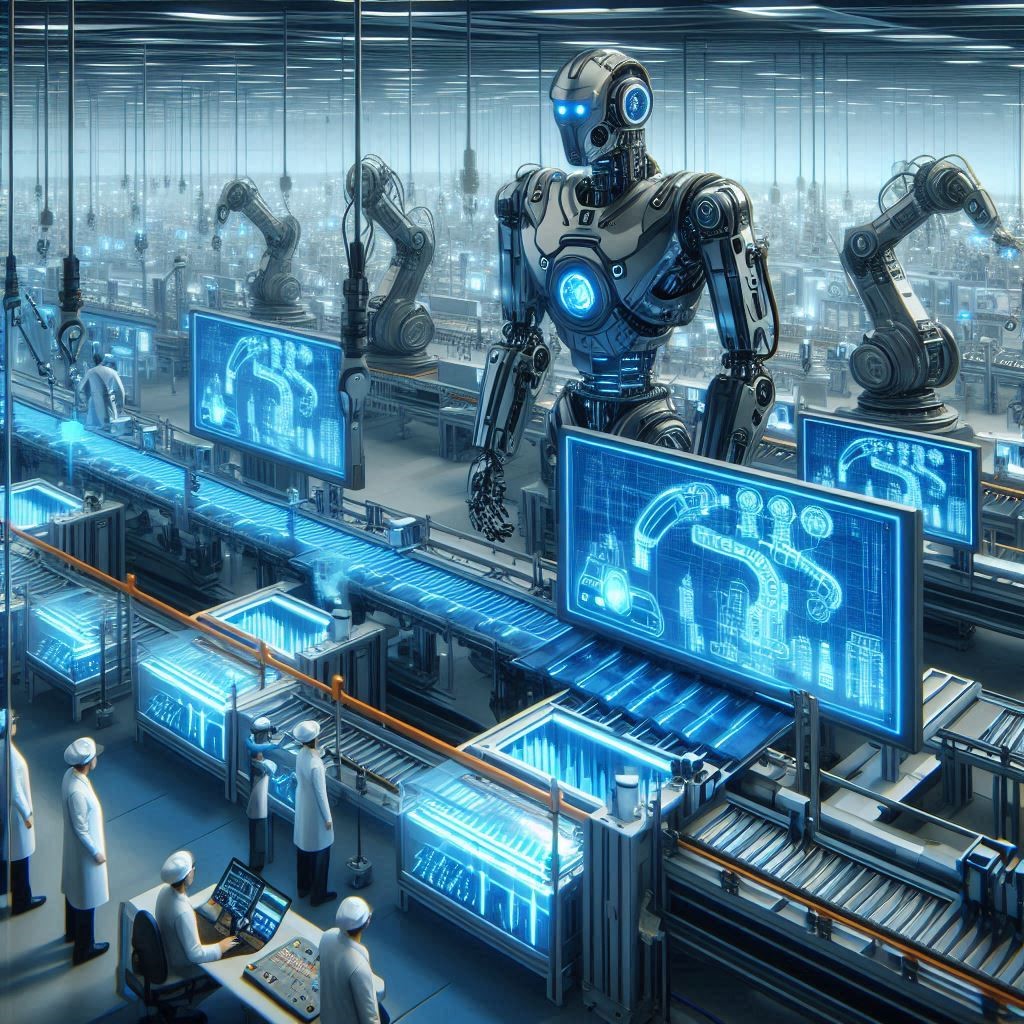The landscape of manufacturing and automation is undergoing a transformative shift with the rise of collaborative robots, commonly known as cobots. Unlike traditional industrial robots, cobots are designed to work alongside humans, enhancing productivity while ensuring safety.The latest trends in cobotics, key technological advancements, the impact of artificial intelligence (AI), safety innovations, and insightful industry case studies.
The Collaborative Robot Market size is projected to grow from USD 1.9 billion in 2024 and is estimated to reach USD 11.8 billion by 2030; it is expected to grow at a Compound Annual Growth Rate (CAGR) of 35.2% from 2024 to 2030. The growth of the Collaborative Robot industry is driven by higher return on investment than traditional industrial robotic systems; increased demand in e-commerce and logistics sectors; significant benefits in businesses of all sizes; easy programming of cobots.
Key Technological Advancements
1. Enhanced Sensory Perception
Recent developments in sensory technology have empowered cobots with advanced vision systems and tactile sensors. These enhancements allow cobots to perceive their environment more accurately, facilitating better interaction with human workers. High-definition cameras and depth sensors enable cobots to recognize objects and navigate complex environments, improving their functionality in dynamic settings.
2. Advanced Machine Learning Algorithms
Machine learning is revolutionizing cobot capabilities, allowing them to learn from their experiences. Cobots can adapt their operations based on real-time data, optimizing performance without requiring extensive reprogramming. This adaptability makes cobots more versatile and efficient across various tasks.
3. Modular and Scalable Designs
Manufacturers are increasingly focusing on modular cobot designs, which allow businesses to customize and scale their robotic systems according to specific needs. This flexibility not only reduces costs but also accelerates deployment in diverse applications, from assembly lines to healthcare.
Download PDF Brochure @
https://www.marketsandmarkets.com/pdfdownloadNew.asp?id=194541294

Impact of AI on Collaborative Robots
AI is playing a pivotal role in shaping the future of cobots. By integrating AI-driven decision-making, cobots can perform complex tasks with greater autonomy. For instance, AI algorithms can analyze production data to predict equipment failures, enabling proactive maintenance and reducing downtime. Furthermore, AI enhances human-robot collaboration by enabling cobots to understand and respond to human commands more intuitively, fostering a seamless working relationship.
Predictive Analytics and Maintenance
AI-powered predictive analytics tools are becoming commonplace in cobot applications. These tools analyze historical data and sensor inputs to forecast potential issues before they occur. By anticipating maintenance needs, companies can reduce operational disruptions and improve overall productivity.
Safety Innovations in Cobots
Safety remains a primary concern in human-robot collaboration. The latest innovations in cobot safety protocols are addressing these challenges effectively.
1. Advanced Safety Sensors
New safety sensors enable cobots to detect human presence more accurately. By utilizing proximity sensors, cameras, and LiDAR technology, cobots can identify and react to nearby workers, minimizing the risk of accidents.
2. Safe Interaction Protocols
Cobots are now equipped with intelligent interaction protocols that ensure safe collaboration. These protocols allow cobots to slow down or stop operations when a human enters their workspace, promoting a safer environment for all.
3. Comprehensive Safety Standards
Industry organizations are developing and updating safety standards specific to cobots. Compliance with these standards ensures that manufacturers prioritize safety features in cobot design, leading to more reliable and secure operational environments.
Industry Case Studies
Case Study 1: Automotive Assembly
In an automotive manufacturing facility, a leading car manufacturer implemented collaborative robots to assist human workers on the assembly line. By integrating AI-driven cobots equipped with advanced vision systems, the company improved production efficiency by 30%. The cobots technology performed repetitive tasks such as screwing and lifting, allowing human workers to focus on more complex assembly processes.
Case Study 2: Healthcare Support
A hospital adopted cobots to assist in patient care and logistics. These robots, equipped with advanced sensory perception, could navigate through busy hospital corridors while delivering medications and supplies. The implementation of cobots not only streamlined operations but also reduced the physical strain on healthcare staff, resulting in improved patient care.
Case Study 3: Food Production
In a food production facility, cobots were utilized to handle packaging tasks. With their ability to adapt to different product sizes and shapes, the cobots significantly reduced packing times and errors. The facility reported a 25% increase in output while maintaining stringent food safety standards.
The collaborative robots industry is rapidly evolving, driven by technological advancements and the integration of AI. As safety innovations continue to enhance human-robot collaboration, businesses across various sectors are reaping the benefits of increased productivity and operational efficiency. By embracing these trends and innovations, industries can harness the full potential of cobotics, paving the way for a more automated and collaborative future
Major Collaborative Robot companies include:
- Universal Robots A/S (Denmark)
- FANUC CORPORATION (Japan)
- ABB (Switzerland)
- TECHMAN ROBOT INC. (Taiwan)
- AUBO (BEIJING) ROBOTICS TECHNOLOGY CO., LTD (China)
- KUKA AG (Germany)
- Doosan Robotics Inc.(South Korea)
- Denso Corporation (South Korea)
- YASKAWA ELECTRIC CORPORATION (Japan)
- Rethink Robotics GmBH (Germany)
